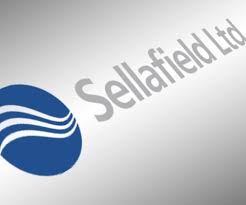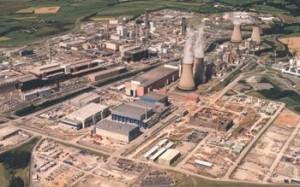A general misconception within the 3D printing space is that objects printed are typically cheap, plastic, and may not be as strong as parts which are manufactured using traditional methods. Because of this, many people would  never imagine a nuclear plants utilizing 3D printing to make parts which would help them decommission some of the most hazardous plants in the world. That’s just what a US-led private consortium is doing at the Sellafield nuclear plant in Britain.
never imagine a nuclear plants utilizing 3D printing to make parts which would help them decommission some of the most hazardous plants in the world. That’s just what a US-led private consortium is doing at the Sellafield nuclear plant in Britain.
Sellafield, the largest nuclear waste site in all of Western Europe, spanning over 6 km, will be using 3D printing for what it’s best at, making complex customized parts. The plant, which was constructed 68 years ago, is so outdated that many of the parts used during construction were produced only once for a single use. This means that there are no spare parts or even molds remaining to produce replacements. Using traditional molding techniques, to replicate these broken parts would be extremely expensive and time consuming. 3D printing, on the other hand, can print a part in a matter of hours, at costs which are a fraction of the price of traditional methods.
Just one example of the cost savings that Sellafield Ltd. is realizing is for a lid needed to a 40 ton solid-waste export flask. The flask is used to transport hazardous nuclear waste from  location to location within the plant, without permitting any contamination along the way. It cost them just £3000 to have the piece scanned, whereas other techniques of reproducing the part would cost them upwards of £25,000. Normally they would need to use metrology, which would require very precise measurements of the part, and then the formation of a mold which they could then use to reproduce the piece needed.
location to location within the plant, without permitting any contamination along the way. It cost them just £3000 to have the piece scanned, whereas other techniques of reproducing the part would cost them upwards of £25,000. Normally they would need to use metrology, which would require very precise measurements of the part, and then the formation of a mold which they could then use to reproduce the piece needed.
“We’re seeing huge numbers of possibilities where we don’t have to redesign work, don’t have to take the plant down and find alternatives,” stated Alistar Norwood, head of metrology at Sellafield Ltd.
Sellafield Ltd. has come under pressure recently from the National Audit Office, and Public Accounts Committee in Britain for their failure to cut costs surrounding the cleanup of the plant. This has led the company to commission Central Scanning Ltd., and 3T RPD to scan and then print numerous parts which could amount to millions of pounds in savings. Sellafield is the first known nuclear power plant in the world to use such technology, but likely not the last. Discuss this article at the 3DPB.com forum thread about Sellafield.
Subscribe to Our Email Newsletter
Stay up-to-date on all the latest news from the 3D printing industry and receive information and offers from third party vendors.
You May Also Like
DyeMansion Debuts Polymer Post-Processing Solutions at Formnext 2024
DyeMansion is shaking up post-processing workflows with three new solutions unveiled at Formnext 2024. Under the motto It Just WorX, the company introduced the Powershot X for blasting and surfacing,...
Nano Dimension Expands Micro-Manufacturing with Exa 250vx 3D Printer
As it continues to push for the acquisitions of Desktop Metal and Markforged, Nano Dimension has introduced a new micro-3D printing system at Formnext. Adding to the Fabrica Tera and...
3D Systems Pushes New Tech and Partnerships at Formnext
As one of the pioneering companies in additive manufacturing (AM), 3D Systems remains a key player to watch at Formnext 2024, where it is showcasing major partnerships, innovative technologies, and...
Formnext Day Three: Rock & Zoll
The biggest news on day three was, of course, the reactions to the band at the exhibitor’s party. The soirée was well attended, with the crowd rocking on until early...




































